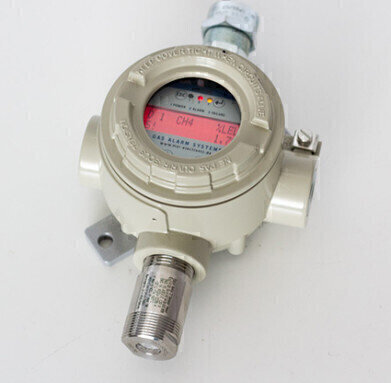Gas Detection
Gas sensors offer protection for research on hydrogen cars
Sep 30 2019
Anyone who talks about electric cars usually envisages the ones with batteries to store electricity. It has long been known that there are also other ways. Fuel cell electric vehicles use hydrogen as a storage medium; the cell generates electricity and the electric motor provides the drive. Only water vapour is produced, but no exhaust gases at all. In the production of hydrogen, however, monitoring by a gas warning system is indispensable. During research work, leaks can occur at any time and cause catastrophic damage in the event of ignition. MSR-Electronic’s PolyXeta®2 with its innovative exchangeable sensor, X-Change, is widely used for successful gas monitoring with defined SIL requirements.
The research on hydrogen cars is regarded as an enlightened vision of the future. Not least because hydrogen is clean, safe and almost infinitely available. In fact, this element is so common that it accounts for more than 2/3 of all materials in the world. This means that H2 can always be produced locally due to its ubiquitous nature.
A well-known automobile manufacturer in Baden-Württemberg attaches importance to high safety in its development department for hydrogen-powered vehicles, thus needing a reliable monitoring of gas concentration in order to detect the volatile organic hydrogen molecules. Highly robust PolyXeta®2 sensors from MSR-Electronic can display a precise and stable hydrogen content in the air after remote calibration. The measuring method with integrated temperature and drift compensation stands for highest accuracy and reliability with the long service life of the sensor. The device has a standard 4-20 mA analogue output and two relays with adjustable switching thresholds. In the emergency of a leakage, an early warning of the occurrence of an ignitable gas concentration and countermeasures can be initiated. The step-by-step conversion of 190 transmitters and the maintenance is carried out by the partner Gawado Gaswarnsysteme in this project.
Of course, hydrogen has to be produced in the first place, because it does not occur in this form in nature. Unlike oil, hydrogen is not a limited raw material. The largest manufacturer is the chemical industry producing hydrogen as a by-product or co-product – this alone would be enough to operate 750,000 vehicles in Germany according to the technology group Linde. Hydrogen forms bi-molecules H2 and is present in gaseous state at room temperature. In its pure form, hydrogen is an invisible, odourless and non-toxic gas. There are various methods of producing hydrogen, such as steam reforming or electrolysis. In addition, hydrogen is also relatively easy to store and transport. It is thus one of the most important energy carriers of the future. Hydrogen is very highly flammable. The gas reacts violently with air, oxygen, halogens and strong oxidizing agents.
Digital Edition
IET 34.2 March 2024
April 2024
Gas Detection - Biogas batch fermentation system for laboratory use with automatic gas analysis in real time Water/Wastewater - Upcycling sensors for sustainable nature management - Prist...
View all digital editions
Events
Apr 24 2024 Jakarta, Indonesia
Apr 24 2024 Sao Paulo, Brasil
Apr 30 2024 Melbourne, Australia
Apr 30 2024 Birmingham, UK
May 03 2024 Seoul, South Korea


















